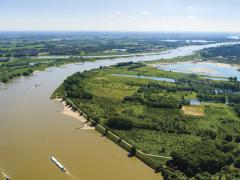Modelling the impacts of European emission and climate change scenarios on acid-sensitive catchments in Finland
The dynamic hydro-chemical Model of Acidification of Groundwater in Catchments (MAGIC) was used to predict the response of 163 Finnish lake catchments to future acidic deposition and climatic change scenarios. Future deposition was assumed to 5 follow current European emission reduction policies and a scenario based on maximum (technologically) feasible reductions (MFR). Future climate (temperature and precipitation) was derived from the HadAM3 and ECHAM4/OPYC3 general circulation models under two global scenarios of the Intergovernmental Panel on Climate Change (IPCC: A2 and B2).
Main findings
The dynamic hydro-chemical Model of Acidification of Groundwater in Catchments (MAGIC) was used to predict the response of 163 Finnish lake catchments to future acidic deposition and climatic change scenarios. Future deposition was assumed to 5 follow current European emission reduction policies and a scenario based on maximum (technologically) feasible reductions (MFR). Future climate (temperature and precipitation) was derived from the HadAM3 and ECHAM4/OPYC3 general circulation models under two global scenarios of the Intergovernmental Panel on Climate Change (IPCC: A2 and B2).
The combinations resulting in the widest range of future changes were 10 used for simulations, i.e., the A2 scenario results from ECHAM4/OPYC3 (highest predicted change) and B2 results from HadAM3 (lowest predicted change). Future scenarios for catchment runoff were obtained from the Finnish watershed simulation and forecasting system. The potential influence of future changes in surface water organic carbon concentrations was also explored using simple empirical relationships based on 15 temperature and sulphate deposition.
Surprisingly, current emission reduction policies hardly show any future recovery; however, significant chemical recovery of soil and surface water from acidification was predicted under the MFR emission scenario. The direct influence of climate change (temperate and precipitation) on recovery was negligible, as runoff hardly changed; greater precipitation is offset by increased evapotran20 spiration due to higher temperatures.
Predicted changes in dissolved organic carbon induced by reductions in acid deposition or increases in temperature may potentially influence the recovery of surface waters from acidification and may offset the increase in pH resulting from S deposition reductions. However, many climate-induced changes in processes are generally not incorporated in current versions of acidification mod25 els. To allow more reliable forecasts, the mechanisms by which climate changes affect key biogeochemical processes need to be incorporated directly into process-oriented models such as MAGIC.
Authors
Specifications
- Publication title
- Modelling the impacts of European emission and climate change scenarios on acid-sensitive catchments in Finland
- Publication date
- 21 December 2007
- Publication type
- Publication
- Magazine
- Hydrology and Earth System Sciences 2007; 4(5):3209-48
- Product number
- 92196




